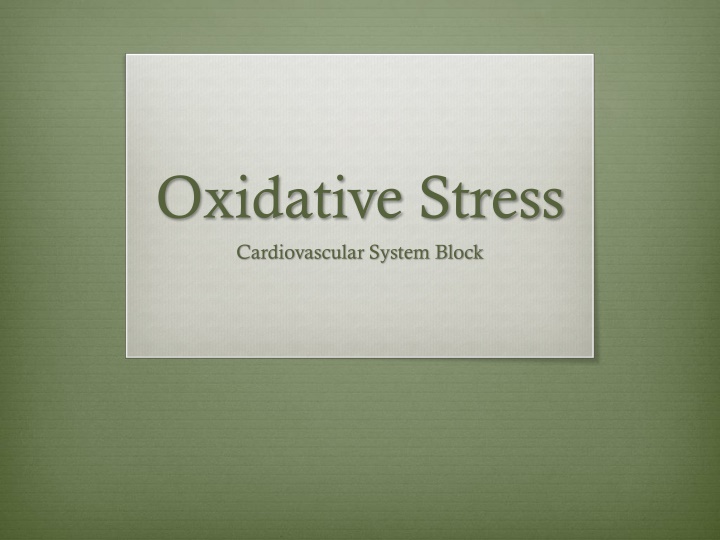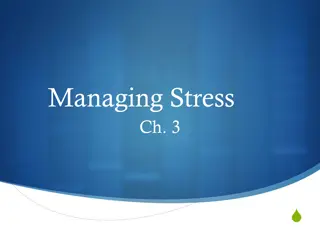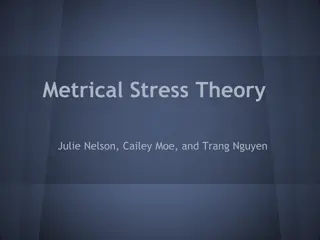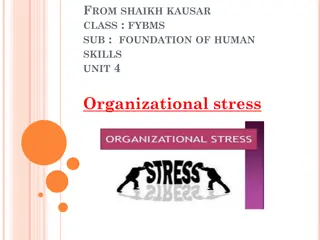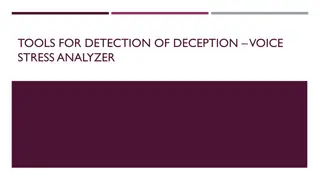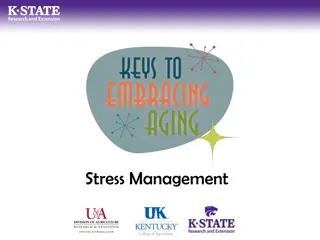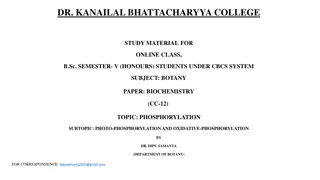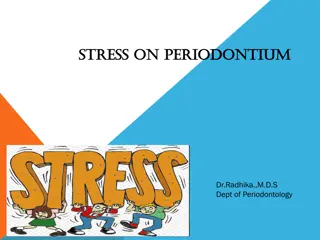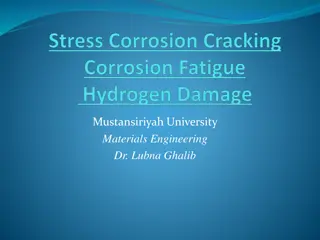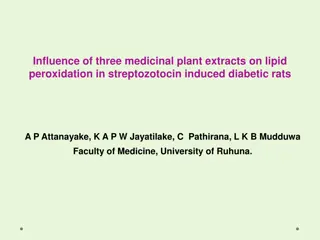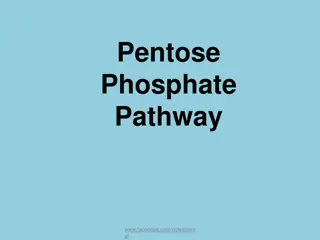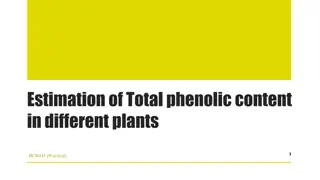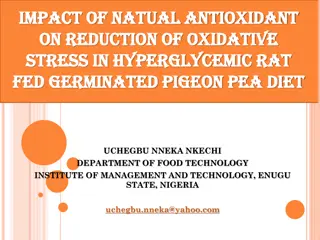Oxidative Stress
Oxidative stress, caused by Reactive Oxygen Species (ROS) and Reactive Nitrogen Species (RNS), can damage cells and lead to diseases like atherosclerosis and coronary artery disease. This lecture covers the definition of oxidative stress, its harmful effects, types of ROS, antioxidants, Glutathione system, G6PD deficiency, RNS, and their role in atherosclerosis.
Download Presentation

Please find below an Image/Link to download the presentation.
The content on the website is provided AS IS for your information and personal use only. It may not be sold, licensed, or shared on other websites without obtaining consent from the author.If you encounter any issues during the download, it is possible that the publisher has removed the file from their server.
You are allowed to download the files provided on this website for personal or commercial use, subject to the condition that they are used lawfully. All files are the property of their respective owners.
The content on the website is provided AS IS for your information and personal use only. It may not be sold, licensed, or shared on other websites without obtaining consent from the author.
E N D
Presentation Transcript
Oxidative Stress Cardiovascular System Block
Objectives By the end of this lecture, the First Year students will be able to: Define oxidative stress Understand the harmful effects of oxidative stress to the cell and its diseases List the types, sources and effects of Reactive Oxygen Species (ROS) List various antioxidants in the body Understand the role of glutathione system in detoxifying oxidants in the body Discuss how G6PD deficiency leads to oxidative stress Understand the role of Reactive Nitrogen Species (RNS) in contributing to oxidative stress Correlate the role of oxidative stress to pathogenesis of atherosclerosis
Overview Oxidative stress Reactive Oxygen Species (ROS): types, sources, effects Antioxidants Glutathione system G6PD deficiency Nitric oxide (NO): Reactive Nitrogen Species (RNS) Oxidative stress and atherosclerosis
Oxidative stress A condition in which cells are exposed to excessive levels of: Reactive Oxygen Species (ROS) or Reactive Nitrogen Species (RNS) Cells are unable to neutralize their deleterious effects with antioxidants Oxidative stress is implicated in atherosclerosis, CAD, ageing
Oxidative stress Cellular imbalance of oxidants and antioxidants damages: DNA, proteins, lipids Diseases due to oxidative stress: Inflammatory diseases (rheumatoid arthritis), atherosclerosis, CAD, obesity, cancer, G6PD deficiency hemolytic anemia
Reactive Oxygen Species (ROS) Incomplete reduction of oxygen to water produces ROS ROS are continuously formed: As byproducts of aerobic metabolism Thru reactions with drugs and toxins When cellular antioxidant level is low Creating oxidative stress in cell ROS can damage DNA, proteins, unsaturated lipids cell death Cells have protective antioxidant mechanisms that neutralize ROS
Types and sources of ROS Free radicals: Superoxide (O2 -) Hydroxyl radical (OH ) Non-free radical: Hydrogen peroxide (H2O2) Sources: Aerobic metabolism Partial reduction of molecular oxygen in ETC Ingestion of drugs, toxins, chemicals
Antioxidants Enzymes: Superoxide dismutase Catalase Glutathione system Vitamins: Vitamins A, C, E -Carotene
Glutathione system Present in most cells Chemically detoxifies H2O2 Catalyzed by glutathione reductase Uses NADPH that reduces glutathione which reduces H2O2
G6PD deficiency Leads to NADPH deficiency Cells are unable to reduce free radicals Oxidation of cellular proteins is increased causing impaired cell functions
Effects of ROS Lipid peroxidation (polyunsaturated fatty acids) Cell signaling effects Release of Ca2+ from intracellular stores DNA damage Altered vascular tone Protein denaturation Increased endothelial cell permeability Cytoskeletal damage Chemotaxis
Nitric oxide (NO) Endothelial-derived relaxing factor Causes vasodilation by relaxing vascular smooth muscle NO is a gas with short half-life (3-10 sec) NO + Oxygen/Superoxide Nitrates, Nitrites, Peroxynitrite (O=NOO-) Peroxynitrite is a Reactive Nitrogen Species (RNS)
Nitric oxide (NO) NO is produced by nitric oxide synthase: eNOS in the endothelium (vaso-relaxation) nNOS in the neural tissue (neurotransmission) iNOS in macrophages, neutrophils (infection) bNOS (bacterial) iNOS activity (normally low) increased by infection and pro-inflammatory cytokines Activated macrophages produce O2 - radical + NO OH radical highly bactericidal Increased iNOS activity free radicals oxidative stress
Take home message Oxidative stress is due to excessive production of ROS and NOS in the cells. Cells neutralize these oxidants by a number of antioxidant processes. Imbalance between oxidants and antioxidants in the cells can result in the development of many diseases including atherosclerosis.
References Lippincott s Biochemistry, 6th Edition, Chapter 13, pp. 148-152. Lippincott Williams & Wilkins, New York, USA.
